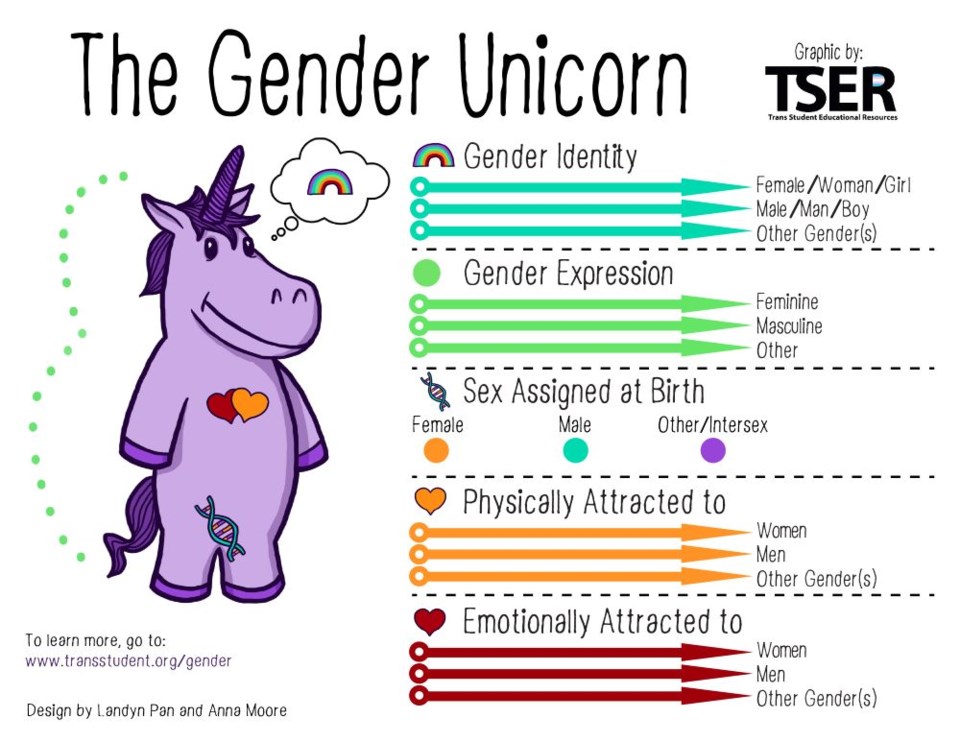Part two of a four-part series on children and gender identity
Sexual orientation and gender identity are hot topics that bring much controversy and misinformation with them, especially when it comes to youth.
A group of local healthcare providers and doctors, Physicians for Diversity & Inclusion, have come together to stand with families of gender diverse children and gender diverse members of the community.
Dr. Ingrid Cosio, whose practice includes time spent at the Northern Gender Clinic in Prince George each week, provides specialized care to transgender and gender diverse persons living in the Northern Health region.
Cosio referred to the online tool called The Gender Unicorn to explain basic terms used when it comes to explaining the difference between gender and sexuality.
“So gender identity is what’s in the brain, in the sense that this is how you feel on the inside – your gender,” Cosio said. “So there is female, male, other. So you can have some of one – it doesn’t mean you’re less of the other.”
Gender expression is how you are presenting yourself, which includes feminine, masculine or other.
“You can feel male even though you were assigned female at birth but not feel safe to express it in any way,” Cosio said. “Or you could fully express that by cutting your hair and doing things that are stereotypically considered more masculine. So that’s your expression piece and that’s what other people are going to see when they look at you. So that’s very different than what’s going on in your thoughts in your brain.”
Sex assigned at birth are your chromosomes and what parts you are born with, Cosio explained.
Who you are physically attracted to are totally separate from gender identity. Sometimes these are divided into physical attraction and emotional attraction.
“So you can have any combination, so that means if a person is gender diverse, it doesn’t mean they are gay and a lot of people make that mistake,” Cosio said.
Cosio often finds those who identify as gender diverse, where things aren’t put in boxes so much, are pan-sexual which means they are attracted to the person, no matter what gender they are or what parts they have.
“It’s really about the connection they make with a person,” Cosio said.
For reliable and accurate information about gender identity, visit the .
Tomorrow: The third step is supporting


